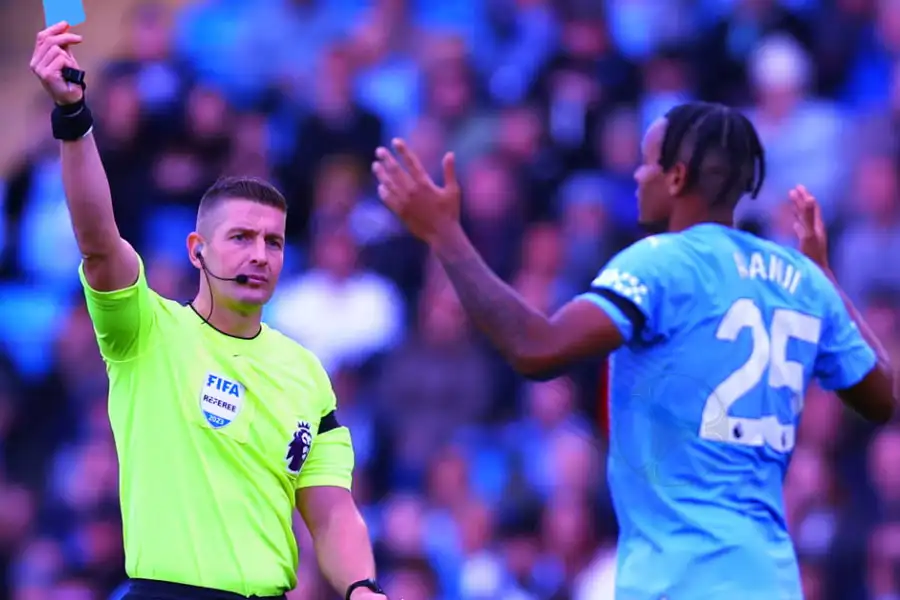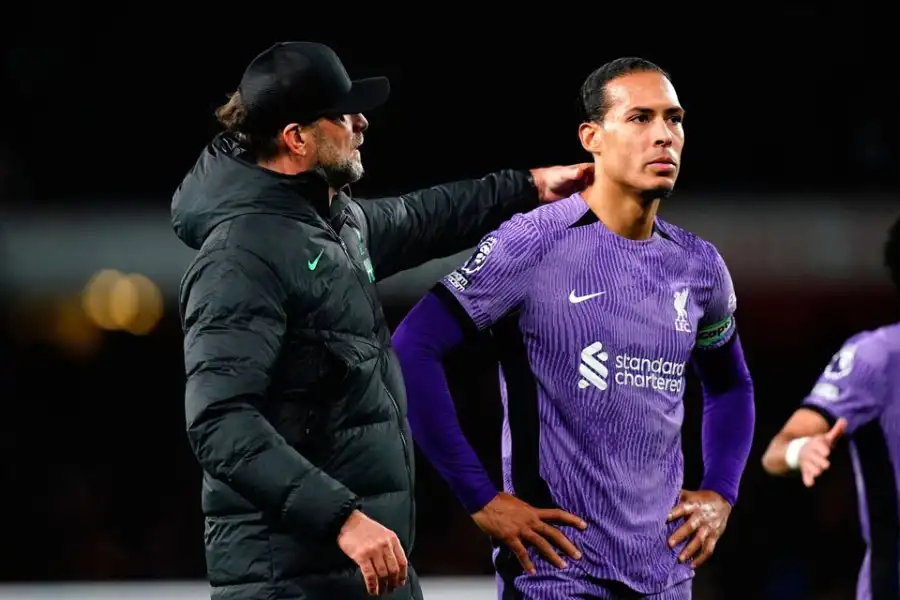Card betting is one of the most exciting and unpredictable markets in football betting. Instead of focusing on goals or corners, this type of wager lets you bet on yellow and red cards shown during the match. Sounds chaotic? That’s exactly what makes it thrilling.
Whether you're backing a feisty derby to rain cards or predicting a referee's tendency to flash yellows like candy, understanding card betting gives you a serious edge. From Over/Under totals to Asian handicap bookings, the possibilities are wild - and profitable.
In this guide, Wintips breaks down exactly what football card betting is, how it works, and the smart strategies to help you beat the bookies one card at a time. Let’s dive in.
What is Card Betting in Football?
Card betting involves placing wagers on the number and type of cards shown during a football match - yellow cards, red cards, or both. Instead of predicting goals, you’re betting on how dirty or disciplined a match will be.
This market is popular because it adds a unique twist to football betting. It relies more on analyzing player behavior, match intensity, and referee tendencies rather than team form or tactics. It's perfect for those who know which players love a cheeky foul or which derbies tend to boil over.

How are Cards counted?
To bet effectively, you need to understand how cards work in football and how bookmakers score them:
- Yellow Card = 1 point
- Red Card (direct) = 2 points
- Second Yellow → Red = 3 points total (1 + 2), counted as both yellow and red
Note: A player can only earn a maximum of 3 card points per match, even if they go full Mortal Kombat.
Knowing how cards are calculated is key, especially when betting on markets like Total Booking Points or Asian Card Handicaps.
Types of football betting Card markets
Football betting on cards has grown in popularity because it allows bettors to wager on aspects of the game beyond just goals or results. Bookmakers now offer a wide variety of card-related markets, especially focusing on yellow and red cards, which provide bettors with new and exciting ways to place their bets. Below are the most common types of football card betting markets:
Over/Under Cards
This is one of the most straightforward and widely used options in card betting. The bookmaker sets a predicted number of total cards that will be shown during the match (both teams combined), and you bet on whether the actual number will be over or under that figure.
Examples:
- Over 4.5 cards – The match must have 5 or more cards for the bet to win.
- Under 4.5 cards – The match must have 4 or fewer cards for the bet to win.
Bookmakers offer various thresholds such as Over/Under 3.5, 5.5, or 6.5 cards, depending on how intense or aggressive they expect the match to be. Games with fierce rivalries or high stakes often come with higher card lines due to increased chances of fouls and bookings.
Total Cards in a Match
Unlike the Over/Under market, where you predict if the number of cards will be higher or lower than a given line, this market focuses on the exact number of cards shown during a match. Some bookmakers make it a bit easier by offering range-based bets instead of requiring an exact count.

Examples of Range-Based Betting:
- 0–2 cards – A calm, drama-free match. Almost like a yoga session with cleats.
- 3–5 cards – A balanced game with some heated moments but nothing too wild.
- 6+ cards – All-out war. Probably a derby, or someone just made the ref angry.
This market is especially useful when considering referees with a reputation for strict or lenient officiating. Some are quick to reach for their pocket, while others tend to let the game flow with fewer interruptions.
Team-Specific Card betting
In this market, you're not focusing on the whole match - just one team's behavior. You’re betting on how many cards a specific team will receive during the game.
Bettors can choose either:
- Over/Under format (e.g., will Team A get more than 2.5 cards?)
- Or an exact number prediction (e.g., will Team B get exactly 1 card?)
Example:
- Team A to receive Over 2.5 cards – They need to rack up at least 3 cards for the bet to win.
- Team B to receive exactly 1 card – You win only if they get exactly one yellow or red.
This market comes in handy for games featuring teams known for rough tackles, time-wasting tricks, or just that spicy defensive playstyle. It’s all about knowing the team's vibe - are they peacekeepers or chaos merchants?
First and Last Card betting
This market is all about timing - not how many cards, but when and to whom they’re dealt.
- First Card: You bet on which team will receive the first yellow or red card of the match.
- Last Card: You predict which team will be shown the final card before the referee blows the whistle.
These bets aren’t just guesswork - they demand sharp insight into:
- A team’s usual tempo at kickoff
- Their disciplinary record
- And of course, the referee's mood (some refs love early drama, others save it for the end)
For example, a team that comes out swinging from the first whistle might be hot favorites for the first card. Meanwhile, underdog teams fighting tooth and nail in the dying minutes? Perfect candidates for the last card.
Player to receive a card
This market lets you bet on whether a specific player will get booked during the match — either a yellow or red card. It may sound straightforward, but it actually requires careful analysis and a deep understanding of the game.
Key factors to consider:
- Playing position: Defenders and defensive midfielders are generally more exposed to challenges and fouls - making them prime candidates for bookings.
- Aggressiveness: Players with a reputation for hard tackles, confrontational attitudes, or frequent fouls are always worth watching.
- Referee style: Some referees are more card-happy than others. Knowing the official for the match can significantly improve your odds.

Example: Betting on Casemiro to receive a card in a match against an attack-minded team might be a smart move due to his combative defensive role.
A red card in the match (Yes/No)
This is a simple yet high-stakes bet where you predict whether at least one red card will be shown during the match.
- Yes - A red card must be issued at any point during the match for the bet to win.
- No - The match must finish with zero red cards for the bet to be successful.
This type of bet is especially popular in:
- High-pressure derbies
- Knockout stage matches
- Games with strict referees who don’t hesitate to flash the red.
It’s quick, it’s thrilling, and it can turn on a single heated moment - so keep your eyes on the intensity and the ref’s history before locking this one in.
Half-time card betting
Why wait for full-time drama when you can cash in by half-time? This market lets you zoom in on the number of cards shown in either half of the match - perfect for those who like action in bite-sized portions.
Popular options include:
- Over/Under First-Half Cards – Predict whether the first 45 minutes will see more or fewer cards than the set line.
- Over/Under Second-Half Cards – Same deal, but for the latter half, where things often get spicy.
- First-Half Team-Specific Cards – Bet on how many cards a particular team racks up in just the first half.
Pro tip: The second half usually gets messier - tired legs, rising tensions, and desperate defending often lead to more cards. So if you're betting on second-half mayhem, you're not alone.
Cards handicap
This market works just like goal handicaps, but instead of goals, we're dealing with yellow and red cards. Bookmakers give one team a virtual head start (or penalty) in terms of disciplinary points before the match even kicks off. Perfect for when you're betting on a calm monk-like squad versus a team full of slide-tackling berserkers.

Examples:
- Team A +1 card – "Team A starts with a +1 card handicap. So if both teams end up with the same number of cards, Team A wins the bet."
- Team B -1 card – "Team B needs to receive at least 2 more cards than Team A for this bet to land."
This type of bet can level the playing field when one side is known for fair play and the other has a history of turning matches into wrestling bouts.
How to bet on football cards: A beginner’s guide
Betting on football cards has become one of the hottest side quests in the betting universe. Instead of focusing solely on goals or match results, this market lets you cash in on yellow and red cards - aka football’s little moments of chaos.
Step 1: Choose a reputable betting platform
Let’s not put your money on a shady site that looks like it was built in 2004. Start by picking a platform that’s got a solid rep and offers card-specific markets - like yellow cards, red cards, card handicaps, and all that spicy stuff.
A great place to start? WinTips - it's smooth to navigate, friendly enough your grandma could use it, and comes with a mobile app so you can follow the card drama anytime, anywhere.

A big name to check out is BK8 Bookmaker. Born in 2015 and based in Malta, this bad boy has quickly grown its presence across Asia - from Vietnam to Malaysia to Indonesia. Despite being the “new kid” in the game, BK8 has built a solid reputation for offering reliable odds, fast payouts, and all the card-related chaos you could hope for.
Before placing any bet, take a moment to explore the platform, get a feel for its features, and make sure it offers the type of card bets you’re into. Think of it as scoping out the playground before jumping into the dodgeball match.
Step 2: Register and fund your betting account
Once you’ve chosen a BK8 sportsbook, you’ll need to create an account by providing basic personal details, such as your name, email, and phone number. After BK8 registration, deposit funds into your account using one of the available payment methods. Popular options include:
- Bank transfers – Secure and reliable, though processing times may vary.
- E-wallets (PayPal, Skrill, Neteller) – Fast and widely accepted.
- Cryptocurrency (Bitcoin, Ethereum) – Offers anonymity and security.
- Credit/Debit cards (Visa, MasterCard) – Convenient but may have transaction fees.

Before making a deposit, check if the bookmaker provides any welcome bonuses or deposit matches, which can enhance your betting budget.
Step 3: Place your bets and track results
Once you’ve analyzed the match and chosen your preferred betting market, proceed to place your wager. Most sportsbooks offer an intuitive betting slip where you can select your desired market, enter your stake, and confirm the bet.
If you enjoy live betting, you can monitor the match and adjust your wagers in real time based on in-game developments. Some bookmakers also provide cash-out options, allowing you to settle bets early if you feel uncertain about the outcome.
Step 6: Withdraw your winnings
If your bet is successful, you can withdraw your winnings through the available payment methods. Before withdrawing, check if your bookmaker has any minimum withdrawal limits or processing times. Some transactions may take a few hours to several days depending on the chosen method.
Check out more BK8 welcome bonus programs to maximize profits.
Factors influencing card betting
When placing bets on football card markets, understanding the factors that influence the number of bookings in a match is crucial. Several key elements, including the referee's officiating style, team discipline, match importance, and player behavior, can significantly impact the number of yellow and red cards issued.
Referee’s tendency
One of the most important factors to consider is the referee’s tendency to issue cards. Some referees are known for being strict and handing out multiple bookings per game, while others prefer a more lenient approach, allowing physical play to continue with minimal interference. Examining a referee’s past statistics can provide valuable insight into how they manage matches.

For instance, a referee who consistently averages five or more yellow cards per match suggests a high probability of a match with multiple bookings, making an "Over" bet on total cards more favorable. Conversely, a referee averaging two to three yellow cards per game indicates a lower likelihood of frequent bookings, making an "Under" bet a safer choice.
Team discipline and playing style
Some teams adopt an aggressive, physical approach, leading to frequent fouls and an increased chance of receiving cards. For example, clubs like Atletico Madrid and Getafe in La Liga are well-known for their tough tackling and defensive resilience, often resulting in higher bookings.

In contrast, possession-based teams such as Manchester City and Barcelona prioritize ball control and tactical movement, reducing the need for rash challenges and typically accumulating fewer cards. Analyzing team statistics on fouls committed per match can provide insight into whether a game is likely to feature heavy bookings.
The importance of the match
The importance of the match also plays a significant role in determining the number of cards. High-stakes encounters, such as local derbies, title deciders, and relegation battles, often see heightened emotions and intense physicality, increasing the likelihood of yellow and red cards. Players are more likely to engage in rough tackles, time-wasting, and dissent, leading to more bookings. On the other hand, friendly matches or games with little at stake generally result in fewer cards, as players focus more on avoiding unnecessary risks and potential injuries.
A player’s disciplinary record
In addition to team tendencies, individual player behavior can heavily influence card betting. A player’s disciplinary record is a valuable metric when betting on individual bookings. Defensive midfielders and aggressive defenders often accumulate more yellow cards due to their role in breaking up play and making last-ditch tackles.

Players like Casemiro or Sergio Ramos have built reputations for receiving frequent bookings due to their combative style. Checking a player’s average number of yellow or red cards per match can help determine whether betting on them to receive a booking is a smart choice.
Head-to-head history
Lastly, reviewing the head-to-head history between two teams can provide valuable insights. Some fixtures have a long-standing history of aggression, often leading to multiple cards. Rivalries such as El Clásico (Barcelona vs. Real Madrid) or the North London Derby (Arsenal vs. Tottenham Hotspur) tend to be heated encounters where fouls, confrontations, and bookings are frequent. If previous matches between two teams have consistently seen a high number of cards, future meetings will likely follow a similar pattern.
Conclusion
Thus, football betting cards are an attractive betting method for players seeking profits outside of traditional betting. However, to be truly successful, players need solid knowledge of the teams, playing styles, and referees, along with the ability to analyze specific situations of each match. With careful preparation and a strategic approach, card betting can become an interesting and profitable investment channel in the world of football betting. Good luck!
See more: What is Virtual Football Betting? Top Best sites and Guide







